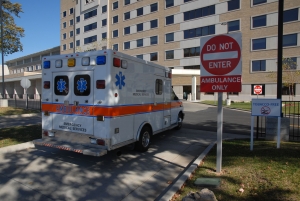Liability Auto Insurance
 Liability auto insurance is one of the most basic types of car insurance that shows up on most auto insurance policies. Although laws on minimum requirements vary from state to state, you can bet most states require liability insurance.
Liability auto insurance is one of the most basic types of car insurance that shows up on most auto insurance policies. Although laws on minimum requirements vary from state to state, you can bet most states require liability insurance.
Check out rates for liability insurance on various policies when you click here to enter your ZIP in our FREE tool now!
There are two types of liability coverage, both of which are typically required. Although you don’t really have a choice when it comes to whether you choose to include liability in your car insurance policy, you do have choices that can keep your costs down.
Basic Definition
As its most basic definition explains, liability refers to you being responsible or liable for something. In the case of auto insurance, that responsibility refers to you being the cause of an accident. Being liable for an accident, in turn, means you are responsible for costs that may stem from the accident.
While you may technically be responsible for the costs in the event of an accident, your liability insurance focuses on the costs associated with the other party.
What Liability Auto Insurance Covers
Liability auto coverage comes in two types, the Illinois Department of Insurance explains. One type is bodily injury liability (BI) and the other type is property damage liability (PD).
Bodily injury liability coverage generally takes care of the costs of injuries or death you caused to the parties in other vehicles or to a pedestrian. As each state has its own laws, your state may also allow bodily injury liability coverage to take care of the costs of injuries or death to passengers in your own vehicle as long as they are not family members in your household, the Illinois DOI says.
 Property damage liability covers the cost of expenses for damage you caused in the accident. A vast range of damages is generally included. PD liability covers the cost of damages to the other vehicles, property, and even items in the surrounding environment. The Illinois DOI gives examples that include fences, buildings, signs, trees, light posts, and other utility poles. It may also include homes, gardens, mailboxes, porches, decks, and anything else that was damaged by the accident.
Property damage liability covers the cost of expenses for damage you caused in the accident. A vast range of damages is generally included. PD liability covers the cost of damages to the other vehicles, property, and even items in the surrounding environment. The Illinois DOI gives examples that include fences, buildings, signs, trees, light posts, and other utility poles. It may also include homes, gardens, mailboxes, porches, decks, and anything else that was damaged by the accident.
Your liability coverage may not stop there. Depending on your particular policy, liability coverage may extend to other circumstances. It may cover the cost of your legal defense if the other party decides to sue you following an accident. It could also cover a family member in your household who was driving your car with your permission.
That means if you tell your husband he may use your truck to get to work, he could be covered under your liability insurance if he causes an accident. That also means, however, if your daughter takes your truck without you knowing while you’re at work, any accident she causes may not be covered.
What Liability Insurance Does Not Cover
 While it is clear that liability takes care of damages and injuries to other parities, it usually does not take care of injuries and damage to your own vehicle. Nor does it typically cover injuries to family members in the household who are passengers in your vehicle.
While it is clear that liability takes care of damages and injuries to other parities, it usually does not take care of injuries and damage to your own vehicle. Nor does it typically cover injuries to family members in the household who are passengers in your vehicle.
This is where other types of insurance are necessary to cover your own costs, especially if you are at fault for an accident. State law is usually not as stringent about requiring coverage for yourself, but it may require some level of auto insurance that takes care of you, your family members, and your vehicle or property.
Liability coverage typically only kicks into play if you are at fault for the accident, whereas other the other types of insurance may be valid regardless of who was at fault. Medical payment insurance is one of those types, according to this site, the Indiana Department of Insurance. Collision coverage and comprehensive coverage are two others.
Other Basic Types of Insurance
Medical payment insurance covers the cost of medical bills that arise due to the accident. It usually covers you as well as your passengers. It may also extend to you and your household family members who are injured by other vehicles when you are pedestrians or not even in your own vehicle.
Medical payment insurance may have a clause that addresses funeral expenses and they may be covered, according to the Illinois DOI.
 Collision coverage takes care of the cost of damages to your vehicle that are caused by a collision while comprehensive covers damages that are caused by forces other than a collision, the Indiana DOI says. Examples of the latter include floods, hurricanes, hail, and other weather-related damage. It also generally includes damage caused by fire, toppled trees, falling structures, vandalism, and theft.
Collision coverage takes care of the cost of damages to your vehicle that are caused by a collision while comprehensive covers damages that are caused by forces other than a collision, the Indiana DOI says. Examples of the latter include floods, hurricanes, hail, and other weather-related damage. It also generally includes damage caused by fire, toppled trees, falling structures, vandalism, and theft.
Free Car Insurance Comparison
Compare Quotes From Top Companies and Save
Secured with SHA-256 Encryption
Liability Insurance by Any Other Name
Depending on where you live, you may find your liability coverage included under an umbrella category of required coverage. A prime example comes from Michigan in the form of its no-fault insurance, according to the state’s Office of Financial and Insurance Regulation.
Michigan law requires no-fault insurance, which refers to several types of coverage that must be included with every auto insurance policy.
No-fault’s coverage comes in three parts, and liability coverage is one of those parts. The liability sections include residual liability and property protection. The third part of the no-fault coverage is personal injury protection.
 The liability insurance that’s part of the coverage covers bodily injury and property damage to other vehicles and property as well as injuries to other parties. It also protects you from being sued when at fault for an accident, although restrictions apply.
The liability insurance that’s part of the coverage covers bodily injury and property damage to other vehicles and property as well as injuries to other parties. It also protects you from being sued when at fault for an accident, although restrictions apply.
You may still face a lawsuit if you cause an accident that leaves someone dead, permanently maimed or seriously injured. A lawsuit may apply if the other party in the accident is not a state resident and is driving a vehicle not registered in Michigan. It may apply if you are driving in another state when the accident occurs.
One more scenario where a lawsuit is still a possibility is if you are more than 50% liable for an accident that causes damages to another party’s vehicle and the damage is not covered by the insurance policy. The lawsuit in this case has a maximum limit of $500.
The property protection covers damage your car does to another party’s property or parked car. It does not extend to another person’s vehicle if it is in motion as part of the accident.
Personal injury protection pays for your medical costs and part of your income for up to three years if you are unable to work.
The Cost of Liability Insurance
Like other insurance coverage, the cost of liability involves several factors. One factor that may jump to the top of the list is where you live and drive. Areas with a higher population and statistically carry a higher risk of accidents. Therefore, living or driving in a crowded urban area may result in a higher cost of liability than you would incur in a sparsely populated, more rural area, the Washington State Department of Insurance notes.
 Other factors that play a part in your premium rates include your age and gender. If you fall into a category that has a high risk of accidents, you may pay more for liability and other coverage than others may. Inexperienced drivers and teens are usually considered higher-risk categories. Male inexperienced drivers and teens are generally a higher risk than females in the same categories.
Other factors that play a part in your premium rates include your age and gender. If you fall into a category that has a high risk of accidents, you may pay more for liability and other coverage than others may. Inexperienced drivers and teens are usually considered higher-risk categories. Male inexperienced drivers and teens are generally a higher risk than females in the same categories.
Additional factors that play a part in your insurance rates include the people in your household, your own driving record, and your annual mileage. Other factors include how you use your car, whether for work, pleasure or both, and the type of vehicle you drive.
While these factors affect your overall premium in general, several of these factors may affect your liability coverage specifically. You cannot change all of the factors, such as your age and gender, but you can try to keep a clean driving record, keep your annual mileage low, and try to use public transportation when in highly populated or urban areas.
Ways to Lower the Cost of Liability and Other Coverage
 Each state that requires liability insurance has set minimum limits. You can keep the cost of your liability low by choosing only the minimum limits. However, you want to make sure the limits are feasible to cover extensive damage or that you could afford to coverage that which goes beyond the limits.
Each state that requires liability insurance has set minimum limits. You can keep the cost of your liability low by choosing only the minimum limits. However, you want to make sure the limits are feasible to cover extensive damage or that you could afford to coverage that which goes beyond the limits.
Raising your deductible generally lowers your premium. However, you once again may want to make sure that the deductible is something you can feasibly afford should an accident occur. You are required to pay the deductible before the insurance company begins to cover the costs.
Discounts are usually available to help cut the cost of insurance, and several may apply directly to your liability coverage. Common discounts many insurance companies offer include a good driver discount, a low annual mileage discount, and discounts for taking specific driving courses approved by the insurance company. Mature driver discounts are often part of the mix, as are car pool discounts, good student discounts, and discounts for installing safety and anti-theft devices.
Enter your ZIP in our FREE search tool on this page to find discounts and low rates on liability auto insurance today!
